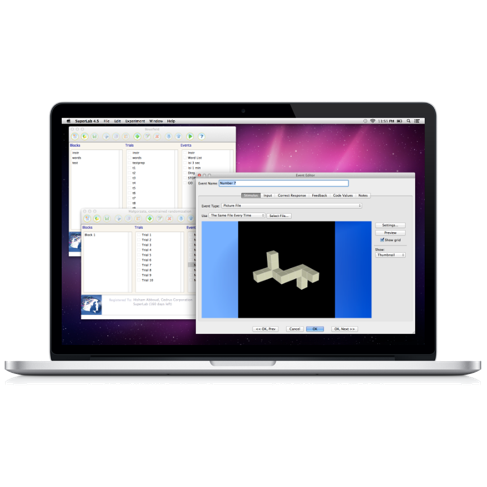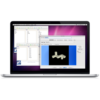Product Enquiry
If you would like to send us an enquiry about this product, please click the button below, fill in the form and submit.
Product EnquirySuperLab 6 & X6
Easy to Learn, Easy to Teach.
SuperLab is the only software that you can teach to students and have them build experiments after a single lecture.
When you’re ready to build more complex experiments, SuperLab is also the only software that does not require you to program – build experiments like staircase and visual thresholds with a point-and-click interface.
Collect Data Anywhere.
With a SuperLab Remote subscription, SuperLab 6 can create runnable experiments. Participants anywhere in the world can then download these experiments and run them.
SuperLab runs on both Mac OS and Windows.
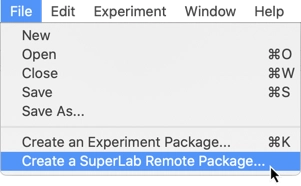
Stimulus Types
SuperLab includes support for text, pictures, audio, movies, self-paced reading, and text RSVP (Rapid Serial Visual Presentation). It can also generate event markers via TTL or serial port.
![]()
Picture Files
Most file formats are supported.
 Movies
Movies
Play one or several movies at the same time.
![]()
RSVP
Rapid Serial Visual Presentation of text has never been easier.
![]() Self-Paced Reading
Self-Paced Reading
Break text into segments and let SuperLab present one segment at a time.
![]() Text
Text
Kanji, Mandarin, or English, in a fixed color or a variable one.
 Sound Files
Sound Files
Play sounds per trial or throughout experiment.
![]() Digital Output
Digital Output
Analyze EEG/ERP data better by sending event codes via StimTracker or I/O card.
![]() Serial Output
Serial Output
Send control data to any device with a serial port.
Input Hardware Support
Input from the computer’s keyboard, mouse, and microphone (for voice key) are all supported. SuperLab supports keypresses and typed text, as well as:
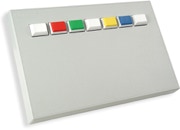 |
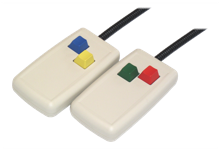 |
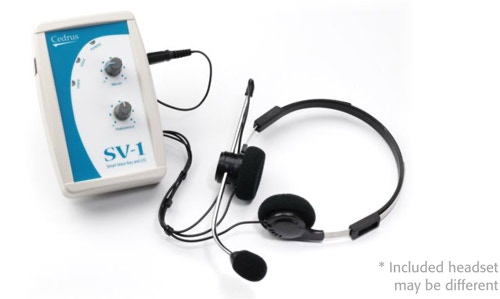 |
 |
|
RB Response Pads |
Lumina fMRI Response Pads |
SV-1 Voice Key |
PST SRB Model 200 |
Output Hardware Support
When you’re ready to send event markers or control external devices, Cedrus has you covered with a range of plug-and-play options:
 |
 |
|
|
c-pod |
m-pod |
StimTracker |
SuperLab X6
When you’re ready to take your research further, SuperLab grows with you. The X6 edition adds live integration with Tobii and SMI eye trackers so you can build gaze contingent experiments. See details below
Feature Rich
SuperLab packs power features that can be used with a simple user interface – no programming. Features like randomization, feedback, stimulus lists, sublists, looping, parameters, and if/then rules.
Create Complex Experiments. Simply.
|
|
 |
Trial RandomizationRandomize trials in a number of ways: one level, two level, once per experiment or per participant group, and so forth. When a trial uses two or more stimulus lists, items in the lists can be paired, unpaired, or crossed. Sublists are, of course, born randomized.
|
Trial LevelsYou can randomize elements within a trial: position of text, pictures or movies, color of text, and/or exposure duration. For visual thresholds, predefine in SuperLab the exposure durations and then use rules to move to the next or previous level, contingent on the participant’s ability to perceive the stimulus.
|
 |
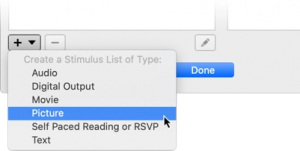 |
Stimulus ListsCreate lists for text, pictures, audio, movies, self-paced reading, or even event markers. Apply any number of tags to individual items in the list. Divide your list into sublists, and even synchronize subsists belonging to different lists.
|
ParametersParameters let you build more sophisticated experiments, e.g. create a “Counter” to add points earned or number of correct responses. If you have previously coded, you know the tedium of implementing a moving window paradigm: create an array, fill it with new trials, and delete old ones. In SuperLab, you simply create a “Collection of Trials” parameter.
|
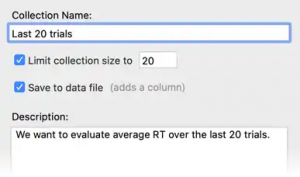 |
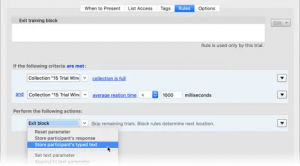 |
RulesBuild even more advanced experiments without learning to program or needing to type IF THEN ELSE statements. In SuperLab, you choose the criteria and actions from a menu so you can focus on the logic – not the syntax. As promised: simple.
|
LoopingSimple as well. A built-in “loop guard” feature prevents the dreaded infinite loop: when a repeated block results in no trials being presented, SuperLab moves to the next block automatically.
|
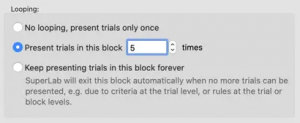 |
Flexible Input OptionsA response can be a key press, key release, typed text, or a non-response (go/no-go paradigm). Also supports voice key and external response pads. |
Participant GroupsChoose which blocks of trials are used in a group. All randomization options can be applied on a per group basis. |
||
TagsAttach tags to trials and change them at run-time to create contingent presentations. Tags are saved to data file to make analysis easier. |
FeedbackProvide feedback, repeat a trial, or update parameters based on a response, lack thereof, or reaction time. |
||
DataParticipants’ responses and RTs are saved in tab-delimited plain text files that can be imported into any software. Use our Data Viewer to merge them. |
Cross PlatformCreate your experiment on either Mac OS or Windows, then run it on either Mac OS or Windows. |
||
Built-in LeasingYou can “lend” a license to colleagues or students for a duration of your choosing (when you own two or more licenses). |
Real Experiments, Ready
A range of classic and demo experiments are freely available. The classic experiments are based on published papers and come with a free downloadable lab book that describes the experiment, the paper that it’s based on, and results.
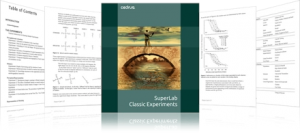
View, Filter, and Merge Data
We call it Data Viewer, but it can do more. Like automatically flagging rows with outlier reaction times, e.g. anything greater than three standard deviations.
You can view files simultaneously and see some basic combined stats. And when you are ready, Data Viewer can produce a merged data file with options to transpose data (easier import into SPSS) and omit flagged rows.
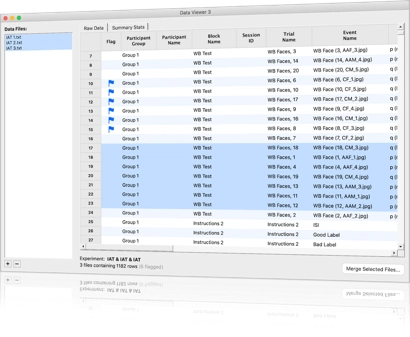
SuperLab X6
SuperLab has always been about combining powerful features with user friendliness. The X6 edition takes this to an entirely new level with seamless integrations built in.
Eye Trackers
SuperLab X6 integrates with SMI and Tobii eye trackers. It provides live integration, allowing a researcher to easily build gaze contingent experiments. SuperLab X6 interprets the gaze data being streamed from the eye tracker and determines if it falls within an area of interest (AOI).
When you start an experiment with a participant, SuperLab X6 provides eye tracker calibration on the fly, eliminating the need to go back and forth between your stimulus presentation computer and the eye tracker software.
When your eye tracker is not physically present, SuperLab X6 provides an eye tracker emulator using the mouse so you can continue working when away from the lab.
SuperLab X6 can also record and save the streamed gaze data.
 Coming Soon
Coming Soon
SuperLab X6 is not just about eye trackers. Cedrus is actively working on a new integration. When available, it will be free to all current X6 users.

